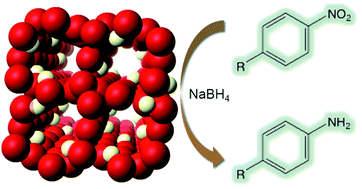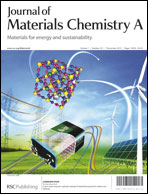Mesoporous Au–TiO2 nanoparticle assemblies as efficient catalysts for the chemoselective reduction of nitro compounds†
Abstract
In this article, we demonstrate novel mesoporous Au-loaded TiO2 nanoparticle assemblies (Au–MTA) as high-effective catalysts for the selective transformation of nitroaromatics into the corresponding aryl amine products. These materials feature a three-dimensional open porous structure consisting of interconnected uniform gold and TiO2 nanoparticles, large internal surface area (ca. 104–120 m2 g−1), and narrow mesopores (ca. 7.3–7.6 nm). Au–MTA displays outstanding performance for the selective reduction of nitro into amine groups using sodium borohydride as a reducing agent under ambient conditions. We show that both chemoselectivity and hydrogenation activity of the Au–MTA catalysts are highly related to the Au loading and particle size. As a result the 2% Au–MTA associated with 5 nm sized Au particles was found to be a prominent catalyst for hydrogenation reactions, providing exceptionally high selectivity (>96%) and conversion yield (>92%) to the corresponding amines. The implication of these results is that mesoporous ensembles of gold and TiO2 nanoparticles should be considered for the synthesis of fine amine chemicals.


 Please wait while we load your content...
Please wait while we load your content...